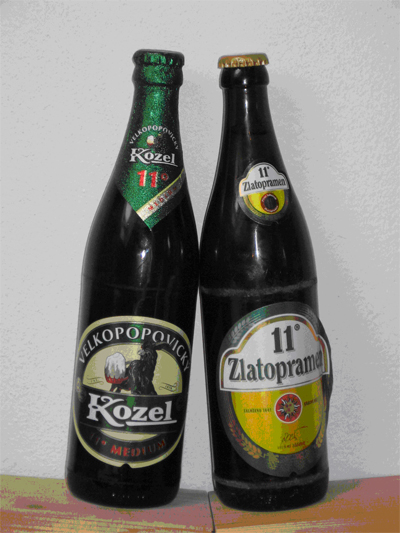Goldilocks and the three beers (the Czech Version)
The newest weapon for Pilsner Urquell in the Czech beer wars is an eleven degree Plato beer called “Gambrinus Excelent”. “Eleven degrees is the next step. Enhanced, but still highly drinkable,” explains Jiri Rakosnik, senior brand manager for Gambrinus. “Usually after two or three 12 degree beers you have a flat tongue. But Gambrinus 11 is still drinkable.”
Gambrinus, or “Gambi” as it is affectionately called, is the mainstream Czech beer. One out of every four beers drunk annually in the country is a Gambrinus (16.3 million hl). While there always has been a 12 degree Gambrinus, the beer is marketed and served as a ten degree beer. Pilsner literature describes Gambrinus much like Goldilocks judged three bowls of porridge at the Three Bears: “It’s not too sweet, not too bitter, not to strong, and not too weak – Taste is just right.”
The consumption of Gambrinus has quadrupled since the 1990s, pushing aside an array of regional brands to become the first true national brew. While exported to seven countries, it is overwhelmingly designated for local drinkers. Pilsner Urquell brews it in three locations – Plzen, Velke Popovice, and Nosovice – for national coverage.
Gambrinus makes up half of Pilsner Urquell’s sales volume in the Czech Republic. All together, these brands, including Pilsner Urquell, the global premium brand for SABMiller, the lower midstream Kozel, Radegast, and a few other budget brews, have half of the Czech beer market.
Although Pilsner Urquell is the dominant player, the competition has not been sleeping. One of the biggest competitors has been Drinks Union, now part of Heineken. Drinks Union resurrected the 11 degree segment with its Zlatopramen and a "one degree better" media campaign. This helped grow the brand’s bottled sales and on-trade business. The 11 degree segment is also the last on-trade refuge for a number of regional breweries such as Hlinsko, Policka, and Chodovar.
The first Pilsner Urquell entrant into the 11 degree market was Kozel Medium in 2005. Now it is time for Gambrinus Excelent.
The big mystery in the Czech beer industry is exactly how big the 11 degree segment is. “Nobody has statistics. We can only make assumptions,” says Mr Rakosnik.
Statistics from the Czech Association of Brewers and Malters do not shed much light on the subject. They put beers into three segments: Vycepni pivo – 10 degrees or less, Lezaky – Lager 12 degrees or less, and Specialni piva – about everything else. The 2007 statistics show 56.96 percent of Czech beer was in the light category, lagers were 38 percent, and specialty beers a middling 4.9 percent. And the 11 degree beer? Well, that is lumped in with the Lager segment. What is visible is that since 2002, when Drinks Union went national, the Vycepni segment has slipped over four percentage points and Lezaky consumption has climbed by a similar amount.
Despite this official ambiguity, eleven degree beer is growing in popularity. “We have been monitoring this trend for two years. It’s not a short-term thing,” says Mr Rakosnik. “We think it is around 9 percent of the whole market.” It is also a growing segment, with an estimated growth of over 10 percent last year.
“It’s a tool to make people more satisfied with Gambrinus,” explains Mr Rakosnik. From the consumer’s point of view, they get more flavour, a stronger experience, more value for their money in a beer that is still highly drinkable. “The 12 degree beer has a full heavy taste. It’s not for drinking 10 or 12 beers.”
From the publicans’ perspective, they now have an 11 degree beer to keep customers from walking across the street to the Drinks Union’ Zlatovar pub. Or one less reason to switch their own tabs over to a Heineken brand such as Zlatopramen, Staro Brno, or Krusovice. Or one more reason to switch to Gambrinus from a local brew.
Gambrinus Excelent is available in bottles and on tap, but the emphasis is on the second category. “We are trying to focus on the on-trade,” explains Mr Rakosnik. “I don’t expect an increase in volume but an increase in sales value.” Remember, Gambrinus already has 60 percent of its sales to the on-trade.
The goal for Gambrinus is simple. “We are the number one in the 10 degree segment. Our goal is to be number one in the 11 degree segment too.”


